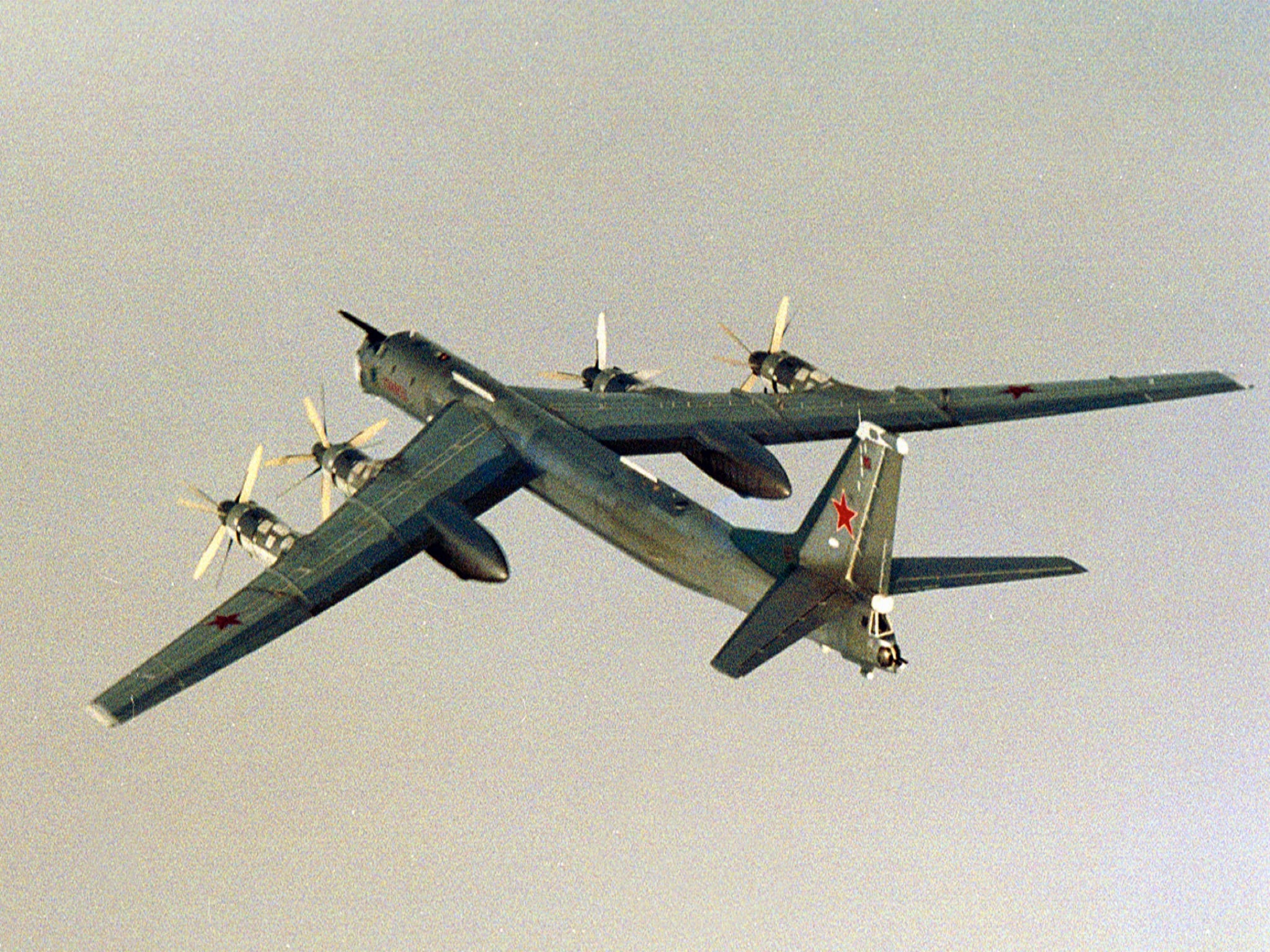Russian bombers fly near Alaskan coastline for second consecutive night
Appearance came night after fighter jets scrambled to intercept pair of Tu-95 long-range bombers

Russian bombers have neared the coast of Alaska for a second consecutive night as relations continue to worsen between the Kremlin and Donald Trump’s administration.
Two Tu-95 Bear aircraft were monitored as they entered the US’ Air Defence Identification Zone on Tuesday.
Unlike the previous night, fighter jets were not scrambled to intercept them but an E-3 Sentry early warning plane was sent to watch their movements.
The operation was mounted by the North American Aerospace Defense Command (Norad), which monitors approaches to the US’ area of interest, just outside its sovereign airspace.
US Air Force First Lt Lauren Hill, a spokesperson for Norad, told The Independent the latest flight was “not out of the ordinary”.
“That no intercept took place and the flight was not dissimilar from out of area flights that Norad has previously seen,” she added, saying that no further details could be given for operational security reasons.
It came after two F-22 Raptor stealth jets and an E-3 plane were launched to intercept two Russian bombers around 100 miles off Alaska on Monday.
The American planes flew alongside the long-range Tu-95s for several minutes before they turned back towards their base in eastern Russia.
It was the first such confrontation since Mr Trump took office, following almost two years of relative quiet in the airspace surrounding the US.
Adam Kinzinger, a Republican member of the House of Representatives, told CNN Vladimir Putin’s forces were “trying to show their teeth” by flying so close to the American coast.
“This was a show of force by the Russians to show us that they are still here…an attempt to come up as close as they could to our international borders to see what our reaction would be,” he added.
Russian military aircraft have been intercepted around 60 times since 2007, an official said, with the most recent previous incident coming in 2015.
That saw a pair of Russian bombers fly just 40 miles off the coast of California and around Alaska on 4 July, when a pilot relayed the message: ”Good morning, American pilots. We are here to greet you on your Fourth of July Independence Day.“
A Russian intelligence ship, the Viktor Leonov, has recently been spotted off the US coast and two months ago, Russian aircraft had several encounters with the USS Porter as it sailed in the Black Sea.
US-Russian relations have soured in the wake of Mr Trump’s vow to improve ties with Moscow, following mounting tensions over Syria, Ukraine and North Korea.
Mr Trump said relations “may be at an all-time low” last week, amid continued investigations into alleged Russian support for his campaign, adding: “Right now we’re not getting along with Russia at all.”
Rising tensions between Russia and Europe over Ukraine and Syria have coincided with an increase in incidents involving Russian aircraft nearing European airspace, including in the UK.
RAF jets have been scrambled on numerous occasions, including in February as Russian Blackjack bombers spent more than five hours circling the British Isles.
Mr Putin has been accused of Cold War-style “brinkmanship” over a series of similar incidents, but the Kremlin has attacked Nato for “warmongering” with new deployments and military drills in eastern Europe.
Join our commenting forum
Join thought-provoking conversations, follow other Independent readers and see their replies
Comments